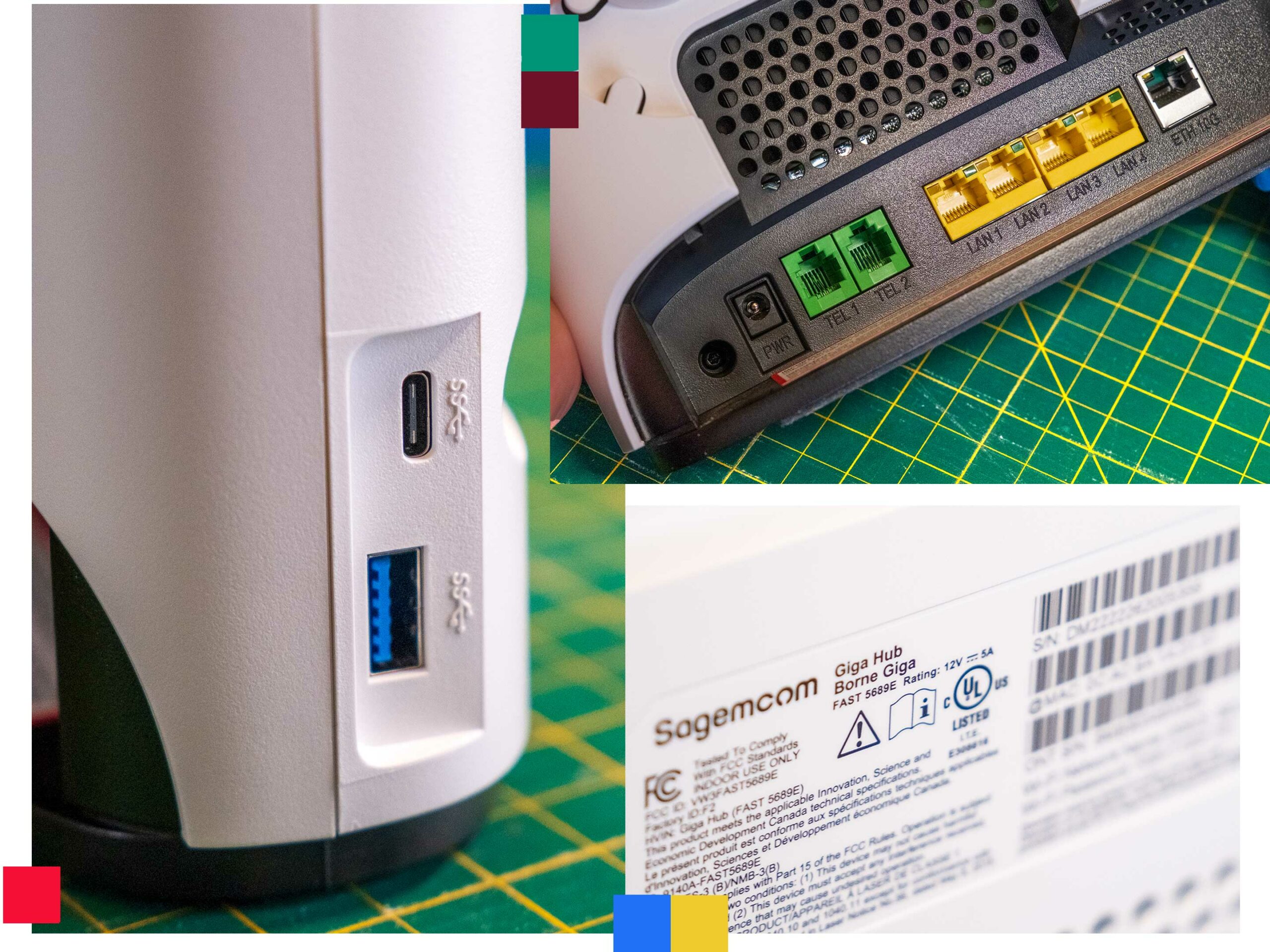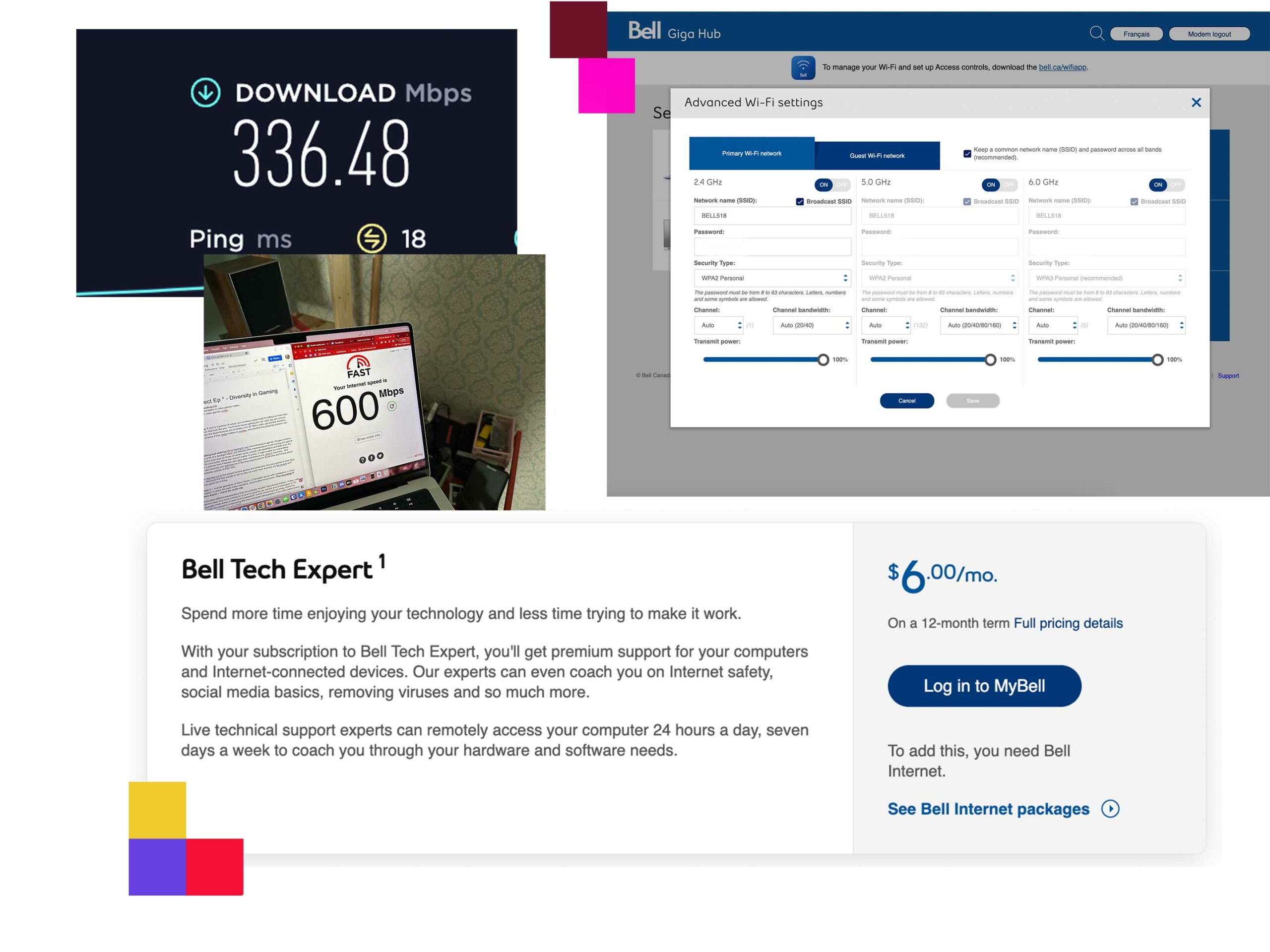Are you a Bell subscriber looking to set up your new Giga Hub router? Or perhaps you’re experiencing some tech nightmares while trying to integrate a third-party modem into your setup? Look no further! In this article, I’ll share my personal experience with Bell’s Giga Hub router and provide valuable insights to help you navigate the setup process and troubleshoot any issues that may arise.
A Fantastic Internet Experience with Bell’s Giga Hub
Since Black Friday 2022, I’ve been using Bell’s Giga Hub router, and I must say, my internet experience has been nothing short of fantastic. This successor to the Home Hub 4000, with its sleek design and support for Wi-Fi 6E, promises better performance when connecting multiple devices that support this new Wi-Fi standard.
Released alongside Bell’s faster 8Gbps speeds, the Giga Hub has exceeded my expectations. The signal consistently covers my entire house, and I haven’t encountered any major problems during the three months of usage. However, I recently ventured into trying a top-of-the-line TP-Link E2000, and let me tell you, it turned into quite the tech nightmare!
Solid Value and Ease of Use with Giga Hub
One of the standout features of Bell’s latest router is its incredible ease of use and setup process. In my case, the Giga Hub was bundled into my plan for free, with the condition that I return it upon canceling my service. A technician promptly arrived at my house to install a fiber line, and within no time, I was up and running.
Once the technician left, I immediately downloaded the Bell Wi-Fi app and effortlessly set my password and network name. While the app might not offer as many advanced options as some tech enthusiasts desire, it provides a straightforward way to set up a network and monitor online activity—perfect for most users. For those wanting to explore advanced settings, full access is available through the traditional modem control panel at Bell.ca/mymodem.
Even in my ground-floor apartment in an older Toronto house, the Giga Hub’s Wi-Fi coverage is exceptional. I can even enjoy a reliable connection outside on my back porch or in the basement. For smaller homes, this single unit should provide ample coverage. However, if you require additional coverage, Bell offers Wi-Fi extenders for a nominal monthly fee of $5. These extenders, powered by Plume, support maximum speeds of 1Gbps via ethernet jacks and slower speeds over Wi-Fi.
While I haven’t personally tested the Wi-Fi extender, it’s important to note that using one may slightly decrease your connection speed when connected to a Plume pod instead of the main router. Online opinions on these extenders vary, but for most users, I recommend starting with just the Giga Hub router. If you find yourself needing more coverage, consider exploring cheaper wired access point extenders before committing to an additional monthly expense that could accumulate over time.
Perhaps my favorite feature of the Giga Hub is the small display on the front. It provides easy access to router functions such as resetting or viewing your password. There’s even a convenient toggle to connect to Bell TV, simplifying the process for those with an IPTV setup.
The Ease and Speed Quandary
While the Giga Hub’s setup is a breeze, I did notice that my speeds often averaged around 400-600Mbps, falling short of the full 1.5Gbps I’m paying for. Connecting with a Cat6 cable does bring me closer to my expected speeds, but it’s worth mentioning that the other ethernet jacks on the router only support 1Gbps. As a fan of modern Wi-Fi, I had hoped to rely less on ethernet cables in the Wi-Fi 6 generation.
Don’t get me wrong; speeds exceeding 500Mbps are more than sufficient for most tasks such as work, web browsing, and video streaming. However, since I’m paying for more than double that speed, it would be great to see the Wi-Fi 6E-compatible router come closer to its theoretical maximum. Especially considering that most of my devices now support Wi-Fi 6, which should handle gigabit Wi-Fi speeds. While I understand that achieving those speeds is unlikely, consistently reaching the 800Mbps-1Gbps range would feel like getting my money’s worth from my ISP.
The Giga Hub’s built-in speed test (pictured above) even indicated a potential 1.6Gbps from my fiber connection, making me wonder what might be preventing my network from achieving fantastic speeds consistently.
The Quest for Modem Customization
As someone who likes to experiment with different modems to optimize Wi-Fi speeds, I ventured into integrating the TP-Link E2000 into my setup while demoting the Giga Hub to modem duty. Unfortunately, the process was far from simple. Connecting another router to the Giga Hub did not disable the Wi-Fi properties of the Bell-provided router/modem combo, resulting in the undesirable situation of having two Wi-Fi networks potentially suffering from a double NAT configuration.
This led me down a rabbit hole of searching for solutions among fellow Canadians experiencing similar difficulties. Initially, I mistakenly believed that the Giga Hub and the Home Hub 4000 were the same device due to their identical appearance. However, I soon discovered that while their physical appearance may be similar, their internal software features several differences. Consequently, many of the more in-depth tutorials that worked for the Home Hub 4000 didn’t apply to the Giga Hub. This added another variable and introduced doubts during my troubleshooting process.
Thankfully, I stumbled across some valuable information on a fantastic blog called The IT Nerd, as well as DSL Reports and Reddit.
At this point, I must admit, I delved far beyond what I would recommend to non-technical individuals. For most users, I strongly advise embracing the Giga Hub as it is. However, my frustration with Bell’s Wi-Fi extension pods fueled my determination to tackle the man vs. machine troubleshooting battle once again. I sifted through countless forum posts, where Bell representatives redirected users to direct messages for further assistance, and I encountered numerous Reddit threads from users with routers from different brands. Finally, I succumbed and decided to seek help from Bell’s tech support.
To be frank, the call didn’t go as smoothly as I had hoped. While the technician provided me with Point-to-Point Protocol over Ethernet (PPPoE) credentials, they were unable to guide me through the process of setting up my Giga Hub with a third-party router. Instead, they attempted to upsell me on a subscription to Bell’s Tech Support Experts, priced at $6 per month—a clear case of concealing full tech support behind a paywall. Needless to say, this left me more frustrated than before. However, armed with the credentials, I returned to one of the initial Reddit posts and attempted the setup process once more, only to face yet another setback.
Back to the internet I went, where I stumbled upon discussions among other Bell customers who mentioned that their PPPoE credentials started with ‘b1.’ Prompted by this insight, I accessed my Bell account and found a number beginning with b1 under the internet section. Though different from the username provided by tech support, it worked perfectly in combination with the new password. While I still haven’t achieved speeds surpassing 1Gbps via Wi-Fi, I am consistently attaining speeds ranging from 700Mbps to 800Mbps—a definite win for the time being.
Conclusion
In summary, Bell’s Giga Hub router offers a solid value proposition, especially when bundled into your plan for free. Its ease of use, coupled with extensive Wi-Fi coverage, makes it an ideal choice for most subscribers. While optimization for maximum speeds and integrating third-party modems can prove challenging, I believe that for the majority of users, sticking with the Giga Hub as provided by Bell is the best course of action. However, for tech enthusiasts like myself, who enjoy experimenting with different modems, be prepared to dive deep into troubleshooting and seek alternative resources for guidance.
Remember, your experience with the Giga Hub may vary depending on your specific setup and requirements. So, proceed with a patient and curious mindset, and don’t hesitate to explore the vast realm of online forums, blogs, and communities for valuable insights. Happy surfing!


